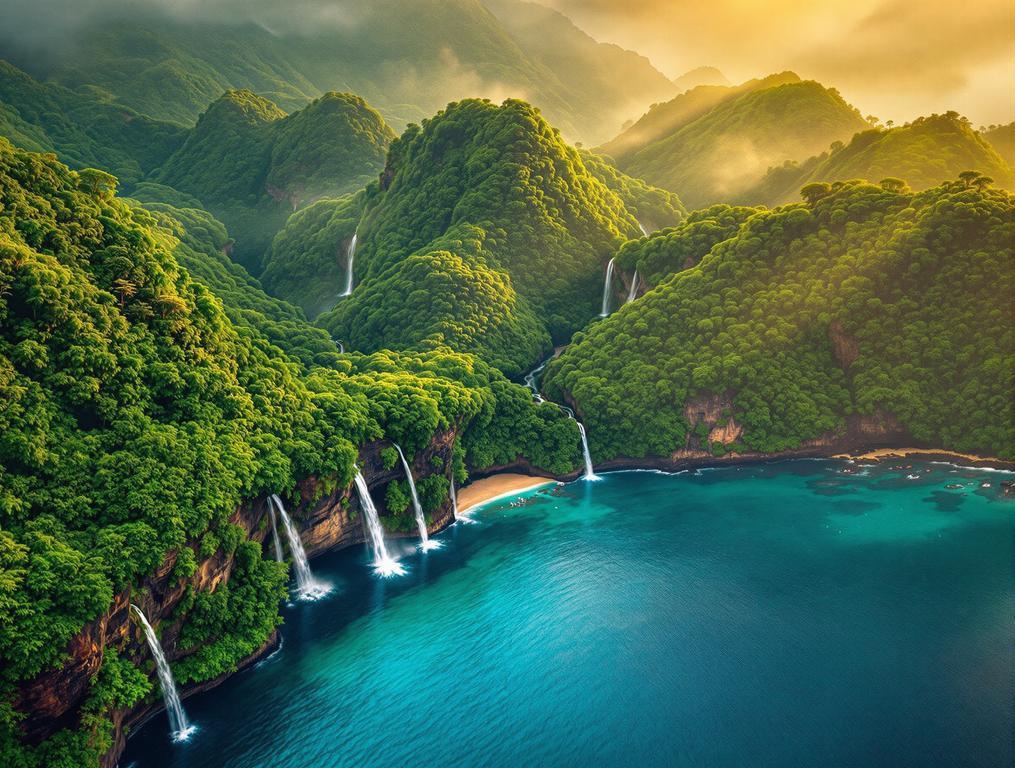Standing on the ferry deck at 5:45 am, I watch Brazil’s Atlantic dawn break over Ilhabela’s 347 square kilometers of emerald slopes. The water crossing takes just 15 minutes, but I’m not here by accident this early. “The locals call it ‘invasão de verão,'” whispers the captain, referring to the island’s most striking phenomenon. This archipelago of 36,329 residents transforms each summer when visitor numbers surge to over 100,000, creating one of Brazil’s most dramatic population shifts just 205 kilometers from São Paulo.
Why Ilhabela’s 360 waterfalls will draw record visitors in 2025
The morning mist clings to Ilhabela’s mountains as I follow a narrow path into Atlantic rainforest so dense it feels like walking through green twilight. This protected biosphere contains over 2,300 species of plants and animals, many found nowhere else on Earth.
“Next year will be our tipping point,” explains my guide, pointing to fresh trail markers being installed. Brazil’s tourism authority forecasts 3.62% growth in 2025, with São Paulo state already recording 277,266 visitors in March alone. Like Bali’s emerging beach destinations seeing record tourism growth, Ilhabela’s natural attractions are positioning it for a visitor surge.
What makes this prediction particularly compelling is the island’s unique accessibility. While 83% of Ilhabela remains protected Atlantic rainforest, it sits just 3 hours from South America’s largest city. The Brazilian tourism ministry has already allocated $12.5 million for infrastructure improvements to manage the anticipated influx.
Climbing higher, I reach the first of what locals proudly call “Ilhabela’s 360 treasures” – waterfalls that cascade through the forest in varying sizes. Some plunge dramatically while others form natural swimming pools carved from ancient stone. Travel enthusiasts seeking lesser-known global destinations with hidden natural treasures will find Ilhabela’s waterfalls rival Europe’s best-kept secrets.
How 36,000 islanders manage when 100,000 tourists arrive
The population-to-visitor ratio here is more extreme than many realize. During peak season, every resident could host almost three visitors, creating a social phenomenon rarely seen in tourism destinations. Ilhabela’s ecological significance rivals Indonesia’s islands with unique ecological significance, each preserving irreplaceable biodiversity.
“We become like temporary caretakers of our paradise. For eight weeks, we share our home with the world. Then the ferry empties, and the island breathes again. This rhythm has become our way of life.”
Unlike other Brazilian coastal hotspots, Ilhabela has developed unique systems to manage this seasonal population explosion. Similar to other destinations balancing tourism without losing authenticity, Ilhabela has developed strategies to maintain its character despite visitor influx.
The locals refer to summer using a term that roughly translates to “beautiful chaos.” Winter, however, reveals the island’s true soul. Currently experiencing mild 17-25°C temperatures, June offers perfect conditions for hiking the rainforest without the crushing humidity or crowds of summer.
What particularly struck me was the absence of mass commercialization. Unlike Hawaii’s developed coastlines, Ilhabela maintains its traditional caiçara fishing culture, with colorful wooden boats dotting the harbors and locals preparing for the upcoming Festa de São Pedro on June 29th.
The Hawaii comparison: Why 2025 travelers are choosing Ilhabela instead
The “Hawaii of the South Atlantic” comparison initially seemed hyperbolic until I ventured deeper into the interior. The biodiversity rivals Kauai’s famous Na Pali coast, but with a crucial difference: accessibility without commercialization.
A day’s exploration costs under $50 including guides, compared to $200+ for similar experiences in Hawaii. While Ilhabela lacks the infrastructure of major Pacific destinations, its proximity to Brazil’s largest city makes it an easier weekend escape than many realize.
As with Europe’s overlooked paradises seeing renewed interest post-pandemic, Ilhabela represents the perfect blend of accessibility and pristine nature. Its appeal to 2025’s eco-conscious travelers lies in authentic experiences without artificial tourist infrastructure.
My wife Sarah would photograph the light filtering through rainforest canopy for hours; my daughter Emma would delight in spotting rare blue morpho butterflies along the trails. That’s Ilhabela’s magic – simultaneously wild yet welcoming, like a secret garden that’s decided to cautiously open its gate. As Brazil’s tourism surge continues through 2025, this Atlantic forest island will inevitably find itself in the spotlight – but for now, its waterfalls still cascade in relative solitude.
